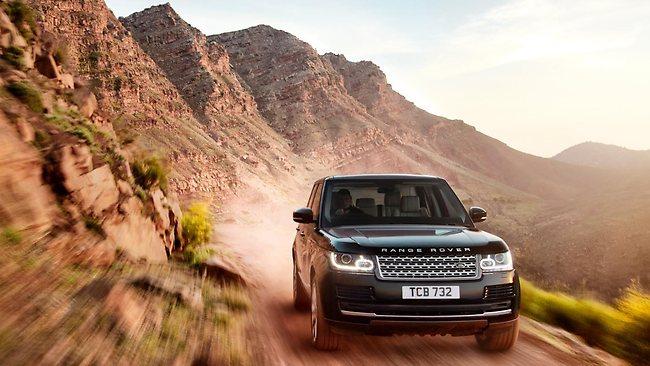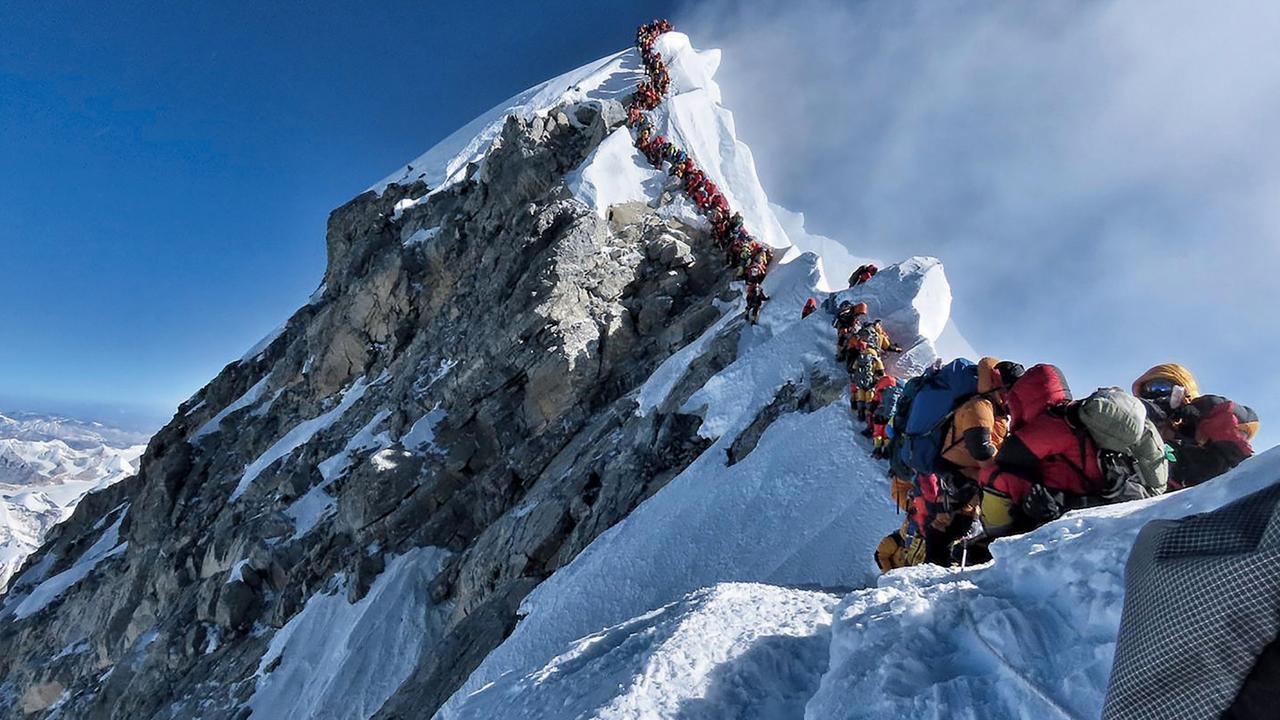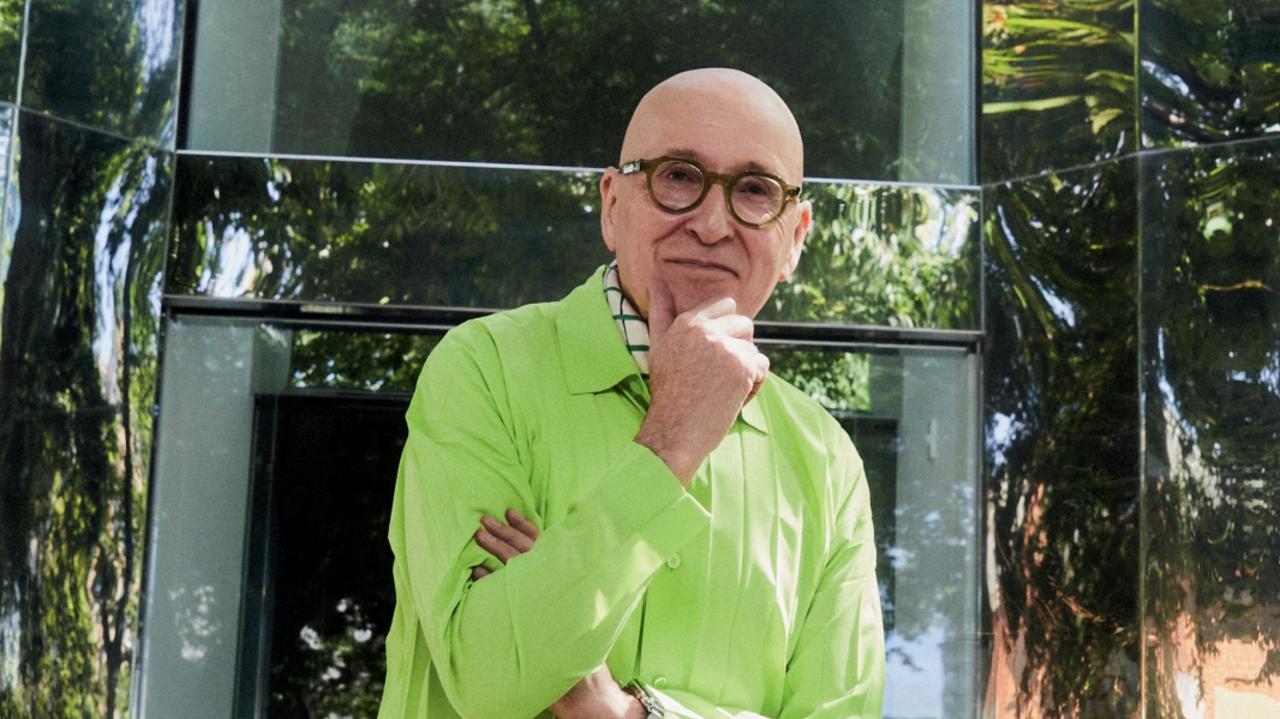Fast movers
BIGGER, better, lighter and quicker - supercar designers know the brief. Here are the new releases coming to Australia.

BIGGER, better, lighter, more eco-friendly - and quicker, of course. And don't even think about compromising on quality or luxury or techno accessories. Supercar designers know the brief and this clutch of new releases promises something for the most discerning driver.
Aston Martin Vanquish
Vehicle: Supercar
Driveline: 5.9L V12, six-speed automatic, rear-wheel drive
Performance: 4.1 seconds to 100km/h, 295km/h top speed
Price: $473,340
Australian deliveries: December
Back in April, one Gold Coast enthusiast was celebrating the arrival of his Aston Martin One-77, a $3 million supercar. It's the only one in Australia and the price, a record for a new car, is unlikely to be beaten for a while. The One-77, with production limited to just 77, is sold out. For a fraction of that, however, those with ample but more modest means can get the next best thing. The Vanquish, Aston's latest performance flagship, has a lot of One-77 in its DNA.
The Vanquish replaces the DBS, which was effectively a version of the DB9 grand tourer with a body kit and performance tuning. Inspiration from the One-77 can be seen in the Vanguish's shapely flanks with elongated strakes and the blade-like rear LEDs.
Aerodynamic efficiency has not been allowed to spoil the look; the Vanquish avoids using a rear wing thanks to a specially designed bootlid that counteracts lift.
The One-77 also influences the car's construction; the body panels of the Vanquish are carbon fibre a first for a series Aston. Underneath sits the latest development of Aston's aluminium tub architecture, revamped with 75 per cent new parts to be 25 per cent stiffer than before. The brand's familiar 5.9L V12 has been repositioned lower, behind the front axle, and reengineered to develop 421kW and 620Nm - 41kW and 50Nm more than the DBS. It also has launch control.
It takes seven hides and 70 hours to trim the cabin with quilted leather and it can be specified as a two-seater or a 2+2. Either way, it's roomier than the DB9 and if you get tired of the engine sound, updated electronics drive a 15-speaker, 1000W B&O sound system.
McLaren MP4-12C Spider
Vehicle: Convertible supercar
Driveline: 3.8L turbocharged V8, seven-speed dual-clutch transmission, rear-wheel drive
Performance: 3.1 seconds to 100km/h, 329km/h top speed
Price: $543,900
Australian deliveries: January 2013
Few convertibles can match their coupe equivalents for driveability because taking the roof off a car is like taking the lid off a shoebox. A rigid structure becomes floppy and unpredictable; suspension tuning is a nightmare.
Folding hardtop roofs spoil things even more. They're bulky to store so the rear has to be tall. Your bum really will look big in it. Only at the elite level can car-makers afford to overcome these problems. The McLaren MP4-12C Spider is based on the same carbon-fibre chassis as the coupe and it's so strong, the company says, it needs no added beams. It claims the result is a convertible only 40kg heavier and, in performance terms, virtually identical to the coupe.They share a 460kW turbocharged 3.8L V8 and the extra weight doesn't reveal itself in acceleration numbers until the 400m drag figure, where the Spider finishes two-tenths behind.
Designer Frank Stephenson gives the Spider a distinctive rear with tapering buttresses behind the cabin that offer protection in a rollover - and look racy.
The roof can be closed on the move up to 30km/h and when it is there's extra luggage space under the tonneau cover. Although the folded roof must compete for space behind the cabin with the engine, the V8 is still visible under a glass screen. McLaren introduced carbon fibre to Formula 1 cars decades ago and it brought success at the track against its traditional rival, Ferrari. With the 12C coupe, McLaren edges the Ferrari 458 on every dimension except desirability. With the 12C Spider, the 458 may have met its match.
Porsche 911 Carrera 4
Vehicle: Sports coupe or convertible
Driveline: 3.4L or 3.8L flat six-cylinder, seven-speed manual or double clutch automatic, all-wheel drive
Performance: 4.1 seconds to 100km/h, 299km/h top speed*
Price: $255,400 to $315,000
Australian deliveries: Early 2013
* Model dependent. Figures for fastest Carrera 4S coupe.
Volkswagen bought the half of Porsche it didn't already own this year, sealing a takeover that has been in limbo for years. The result will be an expansion of the sportscar specialist into models and sales volumes unheard of before. Volkswagen wrote the book on maximising the possibilities from a stable of brands while sharing as much out-of-sight engineering as possible.
However, Porsche can teach its new parent a thing or two about making the most of a limited set of building blocks. Depending on how you count, it spun two dozen different 911s out of the previous model and left no niche unexplored. These included body styles such as cabriolets and targas, engines with turbochargers and stripped-out, track-focused racers.One of the core variants swaps rear-wheel drive for all-wheel drive.
Now the new 911 has arrived, the all-wheel drive C4s are next in line. They mirror the rear-drive cars in terms of engines, transmissions and body styles - there's both coupe and cabriolet. They were subject to the same weight-saving regime, shedding up to 65kg, and notch up the same efficiency improvements. Where they differ is in their all-weather grip, thanks to an upgrade of the all-wheel drive system. Better traction compensates for the system's additional weight, with 100km/h times line-ball with equivalent rear-drive cars. The C4s score on design, too, with flared rear wheel arches giving the car a wide-body look.
Ferrari F12 Berlinetta
Vehicle: Supercar
Driveline: 6.3L V12, seven-speed dual-clutch transmission, rear-wheel drive
Performance: 3.1 seconds to 100km/h, >340km/h top speed
Price: $700,000 approx
Australian deliveries: First quarter 2013
Over the past decade, Ferrari has overhauled its range, focusing on improving efficiency and practicality. A more affordable entry model, the California, comes with the brand's first folding hard-top roof. Its new V12 fourseat flagship, the FF, debuts all-wheel drive. Red cars even have a green tinge, thanks to fuel-saving technology. The final piece of the puzzle is the F12 Berlinetta, the two-seat sportscar companion to the grand touring FF. The F12 displaces the six-year-old 599 GTB and in the supercar card game it's a jump-raise, pushing power and performance beyond anything Ferrari has done before. Its new V12 grows to 6.3L and develops 544kW of power. Revving as high as 8700rpm, it punches the F12 to 200km/h in just 8.5 seconds.
For optimum balance, the engine sits behind the front axle with a double-clutch transmission at the rear. Weight has become an obsession for every car-maker. The F12 sheds 50kg compared with the 599, thanks to a spaceframe of advanced alloys. Its aluminium bodyshell was shaped by sophisticated aerodynamics. All up, it achieves 30 per cent better fuel efficiency than its predecessor. Most remarkable is its lap time around Fiorano, the brand's hometown test track. Thanks to electro-magnetic suspension and Ferrari's latest dynamic software, the F12 beats the Enzo by two seconds. That's a lifetime in track terms and feeds speculation that the next supercar is imminent. It is. The F12's reign at Fiorano will be glorious, if a little short-lived.
BMW M6
Vehicle: Large performance coupe or convertible
Driveline: 4.4L turbocharged V8, seven-speed double-clutch transmission, rear-wheel drive
Performance: 4.2 seconds (4.3 for the convertible) to 100km/h, 305km/h top speed
Price: From $292,500
Australian deliveries: November
Large coupes have been an Achilles heel for BMW. The previous 6 Series was a case in point. It aimed to be a performance luxury flagship, especially with an M badge, but the design was miles wide of the mark and it drove with more aggression than finesse.
The second generation M6 has firmer foundations. It has a more appealing design that, despite a substantial increase in size and weight, has less visual bulk. Extra length means both coupe and convertible come with four useable seats and the cabin is more luxurious. In M versions, the outgoing car's V10 has been swapped for a smaller V8 of 4.4L. Happily for a car that has piled on 200kg, this is one of BMW's new generation turbocharged units and it can whip the 5L V10 on all counts: power rises to 412kW (up 39kW), torque to 680Nm (up 160Nm) and, thanks to its air pump, it's driveable off idle. BMW makes turbos sound better than most and the unit revs to 7200rpm while consuming 30 per cent less fuel.
Performance is trimmed in the convertible; it's another 55kg and it costs another $16,000. It retains traditional fabric for the roof while the coupe has a carbon-fibre panel. This car offers carbon ceramic brakes for the first time while dynamic tricks include electronically controlled dampers and an active rear differential. If it's anything like its sister car, the M5 performance sedan, it will combine ample power with impressive handling. However, these cars are tourers rather than tearaways.
Range Rover
Vehicle: Large luxury SUV
Drivelines: 3L V6 or 4.4L V8 diesels, 5L supercharged V8 petrol, eight-speed automatic, all-wheel drive
Performance: 5.4 seconds to 100km/h, 250km/h top speed
Price: $168,900 to $240,100
Australian deliveries: January 2013
The Range Rover can lay claim to being the first luxury offroader and the third generation, launched a decade ago, remains a class leader in ambience and ability. But there was always an elephant in the room when its virtues were discussed: weight. A fully loaded Rangie is a colossus, tipping the scales at 2.8 tonnes. That proved dangerous ammunition in the hands of enraged environmentalists and meant it was pricey to run. The fourth generation has focused on this aspect above all others. Steel is out, and the entire car has been re-engineered from the ground up using aluminium, making it 350kg lighter compared with the outgoing models. Plus, it's bigger and stronger, more spacious and more refined. Smoother lines to its squarerigged shape even improve aerodynamics.
Its still a mammoth, of course, at well over 2 tonnes. But there are worthwhile efficiency gains.The most expensive versions carry over a supercharged petrol V8 that develops 375kW and flings the Rangie to 100km/h in just 5.4 seconds. It's 7 per cent lighter on the fuel budget but the most frugal employ diesels, with the 4.4L V8 model 10 per cent more efficient than before, while a V6 diesel, which achieves 7.5L per 100km, becomes available for the first time.
Other piorities were enhancing the car's ability and raising comfort levels. New chassis technology means it can get into deeper water while the interior raises the bar on luxury. It needs to. The Range Rover has been the prince of SUVs for decades but its position is about to be challenged by elite brands led by Bentley, Maserati and Lamborghini. The Rangie has a year or two of clear air.


